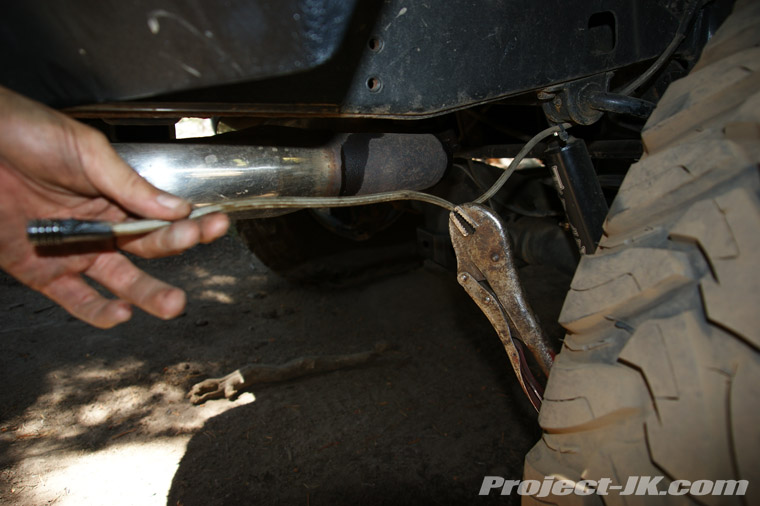I'm working on brakes on an old truck. When trying to remove the brake line from a frozen caliper, I was able to loosen the treaded fitting but the fitting would not turn on the metal line despite heating and spraying pb blaster multiple times. I deformed the line enough to prevent it from sealing. I bought a replacement brake line but I'm having the same problem getting the fitting to loosen on the opposite end. I seem to have about a 50/50 chance of getting old brake lines apart w/o destroying them. Anyone have any tips for improving my odds?
No.
I tape string along the old line to get the correct length then just try to save as much old line as possible to use it as a template.
I've changed the routing a bit (which affects total length) on some of my vehicles but I mostly run as close to factory as possible.
It's sucks but there's not a whole lot you can do. But the bright side is that if you can get it right, you'll have years of not having to worry about it.

carbon
HalfDork
3/16/14 8:35 p.m.
I just do everything at once, then it's done and I dont have to worry about anything for another 150k. I dont have to worry about saving rusty junk during removal, just tear it out and put in shiny stuff.
Living in the snowy Midwest where they salt the roads we not only have to deal with rusty brake fittings but also rusty brake lines. Did you ever have a brake line blow out on a Chevy 2500 series Suburban towing a 2 axel open car trailer with a 3200 lb race car on it with a load of racing supplies etc. in the back of the Suburban? I did and I was lucky as I was only going 30 mph and it happen at a place where I wasn't going to hit anything.
As other posts said, if you're doing brake work plan on breaking something if the vehicle hasn't been worked on in a while. If you don't have a "good" brake flaring tool then the best thing to do is buy brake lines with fittings at both ends and just buy the proper unions to connect them together.
I had enough problems doing this that I finally bought a high quality brake flaring tool from MasterCool.
If theyre that far gone, its only another winter or two before it would have blown out anyway. Inspect them all, light surface rust is ok, but "tree bark"/flaking means it should have been replaced three years ago.
"Vice Grips" from Harbor Freight are cheap.

In reply to Appleseed:
You'd be a fool not to carry vise grips and a pint of brake fluid in an old car that gets used in salt, for that reason, bit me in the ass once, blown line in rush hour traffic, 20 miles from the next place I could safely pull off and not run out of fluid before I found a place to park. Then much beating on the line with a wrench and folding it over with my bare hands to plug it so I could get home. Never again.
Surprisingly the brake line in question isn't rusted to where it needs replaced it was coated in grease and dirt (from oil blow-by problem that has since been fixed) that prevented it from rusting. I just can't get threaded fitting to rotate on the metal line.
rustybugkiller wrote:
I'm working on brakes on an old truck. When trying to remove the brake line from a frozen caliper, I was able to loosen the treaded fitting but the fitting would not turn on the metal line despite heating and spraying pb blaster multiple times. I deformed the line enough to prevent it from sealing. I bought a replacement brake line but I'm having the same problem getting the fitting to loosen on the opposite end. I seem to have about a 50/50 chance of getting old brake lines apart w/o destroying them. Anyone have any tips for improving my odds?
Cut the line and hammer a socket over the fitting.
Where I'm at, it's closer to a 0:100 chance of a brake line coming apart or not. They always stick to the line. At that point you can either heat the fitting orange and try to work it loose or you can cut the line and replace it. Or you can see if you can unthread whatever component you are changing off of the line instead of unthreading the line from the component.
I salvage what I can. Luckily I was able to pull the F150's lines from the master after they burst. So, salvage what you can and replace what you can't. Pretty simple. It's a safety issue. I'll be doing the same thing for the Ranger's rears when I chose to fix the leaky cylinder.


































